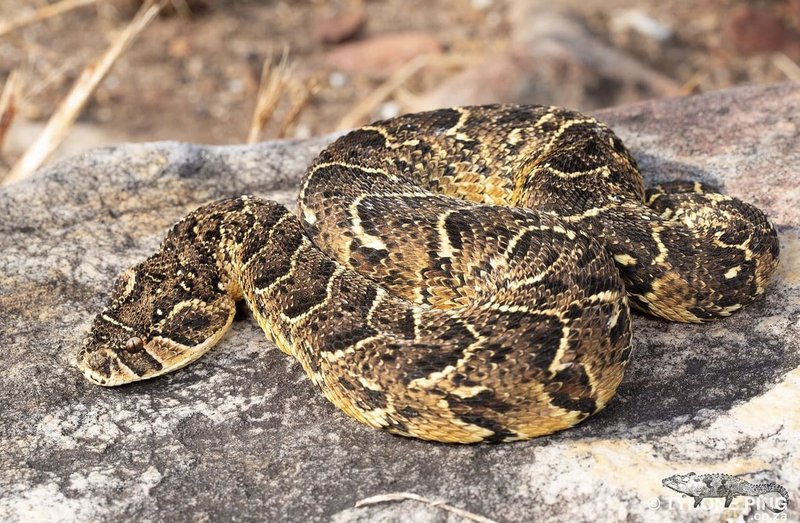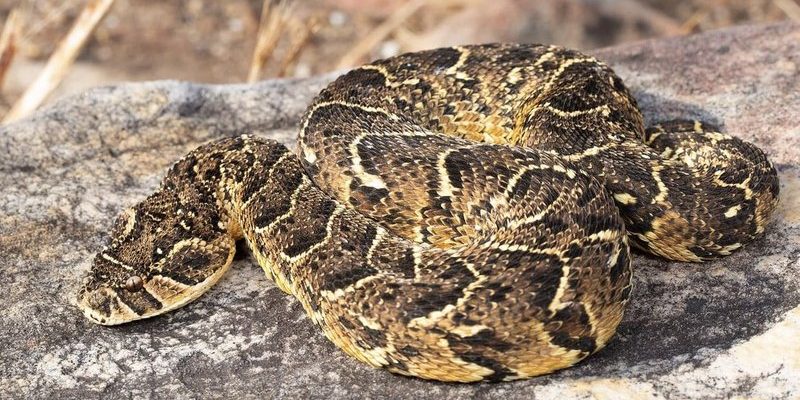
The Puff Adder is one of those snakes that really captures attention. Found primarily in Africa, it’s known for its unique appearance and its role within its ecosystem. Picture a creature with a striking pattern of browns and yellows that allows it to blend seamlessly into the dry grasslands where it resides. But there’s more to this reptile than just its looks. The Puff Adder is infamous for its venom, which is powerful enough to pose a threat to humans and animals alike. Yet, like so many misunderstood creatures, it plays a crucial role in maintaining the balance of nature.
So, what exactly is a Puff Adder? Let’s dive into the fascinating world of this intriguing snake. It’s not just about fear; understanding its behavior and habitat can help dispel myths and encourage a more respectful view of nature. In this guide, we’ll explore its physical traits, habitat, diet, reproductive behavior, and much more, providing a well-rounded look at this remarkable snake.
Physical Characteristics
The Puff Adder, scientifically known as Bitis arietans, has some distinctive features that make it stand out in the reptile kingdom. Its body is thick and stout, typically reaching lengths of about three to four feet, although some individuals can grow larger. This snake has a triangular head that’s wider than its neck, and its eyes are equipped with a vertical slit, much like a cat’s. This unique adaptation helps it see well in low light, which is essential for its hunting habits.
What’s particularly captivating about the Puff Adder is its coloration. The skin is covered in a series of dark zigzag patterns against a light background, which not only looks striking but also serves a practical purpose. This camouflaging helps it blend into its surroundings, making it nearly invisible in the dry grasslands and leaf litter where it often resides. When threatened, the Puff Adder can also puff up its body, hence its name, to appear larger and more intimidating to potential predators.
Some fascinating variations exist among Puff Adders based on their geographical location. For example, those living in darker habitats may have deeper hues than their counterparts in lighter environments. This variability showcases the snake’s ability to adapt to different surroundings, a trait that’s essential for its survival in the wild.
Habitat and Distribution
The Puff Adder calls a variety of environments home, primarily found in sub-Saharan Africa. You can spot them in regions ranging from savannas and grasslands to rocky hillsides. They prefer habitats that provide both shelter and abundant food sources. If you’ve ever wandered through a savanna, you can imagine the Puff Adder lying in wait, perfectly camouflaged and blending into the landscape.
Interestingly, Puff Adders are not strictly terrestrial; they can also be found in some forested areas, especially where the underbrush is dense. Their adaptability allows them to thrive in various conditions, which is a testament to their resilience as a species. During the day, they are often inactive, resting in a cool spot until dusk when they become more active in search of food.
The geographical spread of the Puff Adder showcases its success as a species. From countries like South Africa to Kenya and even parts of West Africa, its diverse range highlights how it has been able to adapt to different ecosystems. This adaptability is crucial as it faces various challenges, including habitat destruction and climate changes that affect its survival.
| Attribute | Details |
|---|---|
| Length: | 3 to 4 feet (could be larger) |
| Habitat: | Savannas, grasslands, rocky hillsides, and forests |
| Diet: | Small mammals, birds, and reptiles |
| Venom: | Hemotoxic, can be fatal to humans if untreated |
| Lifespan: | Up to 10 years in the wild |
Diet and Hunting Strategies
Puff Adders are essentially ambush predators, relying on patience and their impressive camouflage to catch prey. They primarily feed on small mammals, lizards, and birds—anything that comes too close. Imagine lying in wait, completely still, until the perfect opportunity presents itself. That’s exactly how Puff Adders hunt.
When a potential meal wanders into their territory, the Puff Adder strikes with remarkable speed, injecting venom to immobilize or kill its prey. Their venom is classified as hemotoxic, meaning it affects the blood and tissues, causing significant damage. This venom is not only a hunting tool but also a defense mechanism against larger predators.
After a successful hunt, Puff Adders are capable of consuming prey larger than their own head, thanks to their flexible jaws. They will often find a safe spot to digest their meal, which can take several days, depending on the size of the prey. This ability to effectively utilize their resources is crucial for survival, especially in environments where food can be scarce.
Reproduction and Lifespan
When it comes to reproduction, Puff Adders are quite intriguing. They are ovoviviparous, which means that females give birth to live young rather than laying eggs. This is somewhat unusual for snakes, as many species lay eggs. The female Puff Adder typically gives birth to a litter of 20 to 30 young ones, although this number can vary. Each newborn is about a foot long and already equipped with the necessary survival skills.
The mating season usually occurs in spring, though it can vary based on geographic location. Males will often engage in battles for the right to mate with females, using their strength and size to assert dominance. After a successful mating, the gestation period lasts about six months before the young are born, ready to fend for themselves.
In the wild, Puff Adders can live up to ten years, but many face threats that shorten their lifespan. Predators, habitat loss, and human activities can significantly impact their populations. Thus, understanding their reproductive habits is vital for conservation efforts aimed at preserving this fascinating species.
Human Interaction and Conservation
Human interaction with Puff Adders is often filled with misunderstanding. Many people fear these snakes due to their venomous nature, leading to unnecessary killings when they’re spotted. However, it’s important to recognize that Puff Adders generally avoid confrontation. They prefer to bask in the sun or hide in the grass rather than engage with humans. If threatened, they may puff up and hiss as a warning, but they rarely attack unless provoked.
Efforts are being made in various regions to educate communities about the vital role Puff Adders play in the ecosystem. They help control populations of rodents and other small mammals, which can be beneficial for agriculture and public health. By promoting coexistence, we can help reduce the fear surrounding these snakes and foster a better understanding of their behavior.
Conservation efforts also focus on habitat preservation. As human development expands, Puff Adders are losing their natural habitats. Protecting these environments ensures that not only Puff Adders but also countless other species can thrive. It’s a reminder of the interconnectedness of life and the importance of every creature in maintaining the balance of our ecosystems.
Characteristics of Puff Adder Venom
The venom of the Puff Adder deserves special attention due to its potency and the effects it can have on humans. Hemotoxic in nature, it works to destroy blood cells and tissue at the bite site, leading to severe swelling and pain. For those who are bitten, immediate medical attention is crucial. If treated quickly, the effects can often be managed, but delays can lead to more serious complications.
Interestingly, Puff Adder venom is also being studied for potential medical applications. Researchers are examining how certain components of the venom can help with blood clotting and even pain management. This highlights how even the most feared creatures can contribute positively to science and medicine.
Despite its dangers, it’s vital to understand that the Puff Adder doesn’t bite humans without cause. Most bites occur when a person accidentally steps on or provokes the snake. This further emphasizes the importance of awareness and education, reminding us to respect wildlife and tread carefully in their habitats.
FAQ
What is the habitat of the Puff Adder?
The Puff Adder primarily inhabits grasslands, savannas, and rocky hillsides across sub-Saharan Africa. They prefer regions that offer both cover and access to prey, allowing them to thrive in various environments.
How dangerous is the Puff Adder?
The Puff Adder’s venom is highly potent and can be fatal to humans if not treated promptly. However, the snake generally avoids confrontations and bites only when threatened, making it crucial to respect their space.
How can I identify a Puff Adder?
Puff Adders typically have a thick, stout body with a distinctive pattern of brown and yellow or gray and black zigzag markings. Their triangular head and vertical pupils further help in distinguishing them from non-venomous species.
Are Puff Adders aggressive?
Puff Adders are not inherently aggressive; they prefer to stay hidden and avoid confrontation. They will only strike if they feel threatened or provoked, so keeping a safe distance is key to avoiding encounters.
What do Puff Adders eat?
The Puff Adder primarily feeds on small mammals, birds, and reptiles. They are ambush predators and rely on their camouflage to hunt effectively.
How long do Puff Adders live?
In the wild, Puff Adders can live up to ten years. However, their lifespan may be shorter due to threats such as predation and habitat loss.
What should I do if bitten by a Puff Adder?
If bitten by a Puff Adder, seek immediate medical attention. The effects of the venom can be severe, and timely treatment is crucial for reducing complications and improving recovery chances.
Can Puff Adders be found in urban areas?
While Puff Adders prefer natural habitats, they can occasionally be found in urban areas, especially if those areas are close to their preferred environments. Awareness and caution are advised in such instances to avoid potential encounters.
Are Puff Adders active during the day or night?
Puff Adders are primarily nocturnal. They tend to be most active during the evening and at night when they hunt for food, although they can be seen basking in the sun during the day.
What conservation efforts are in place for Puff Adders?
Conservation efforts for Puff Adders focus on habitat protection and education to promote peaceful coexistence with humans. By raising awareness about their ecological role, these efforts aim to reduce fear and misconceptions surrounding the snake.
How do Puff Adders reproduce?
Puff Adders are ovoviviparous, meaning females give birth to live young rather than laying eggs. During the breeding season, males fight for the opportunity to mate, and the female can give birth to 20 to 30 young ones.
What is the role of Puff Adders in the ecosystem?
Puff Adders play a crucial role in controlling populations of small mammals and birds. By maintaining these populations, they help promote balance within their ecosystems, making them important for biodiversity.
Are Puff Adders endangered?
While Puff Adders are not currently classified as endangered, they face threats from habitat loss and human interaction. Conservation efforts are important to ensure their populations remain stable in the wild.

